
Government and sustainable technology solutions company KBR (NYSE:KBR) missed Wall Street’s revenue expectations in Q3 CY2025, with sales flat year on year at $1.93 billion. The company’s full-year revenue guidance of $7.8 billion at the midpoint came in 2.8% below analysts’ estimates. Its non-GAAP profit of $1.02 per share was 6.9% above analysts’ consensus estimates.
Is now the time to buy KBR? Find out by accessing our full research report, it’s free for active Edge members.
KBR (KBR) Q3 CY2025 Highlights:
- Revenue: $1.93 billion vs analyst estimates of $1.96 billion (flat year on year, 1.5% miss)
- Adjusted EPS: $1.02 vs analyst estimates of $0.95 (6.9% beat)
- Adjusted EBITDA: $240 million vs analyst estimates of $235.9 million (12.4% margin, 1.7% beat)
- The company dropped its revenue guidance for the full year to $7.8 billion at the midpoint from $8 billion, a 2.5% decrease
- Management reiterated its full-year Adjusted EPS guidance of $3.83 at the midpoint
- EBITDA guidance for the full year is $970 million at the midpoint, in line with analyst expectations
- Operating Margin: 9.9%, up from 8.9% in the same quarter last year
- Free Cash Flow Margin: 9.8%, up from 7.3% in the same quarter last year
- Backlog: $17.1 billion at quarter end, down 4.4% year on year
- Market Capitalization: $5.53 billion
“Despite revenue headwinds, KBR achieved year on year double digit Adjusted EBITDA growth, strong cash conversion and maintained operational momentum with a strong book to bill. Our diverse portfolio, prudent cost management and focus on value-add for our customers delivered enhanced margins in line with our strategy,” said Stuart Bradie, Chairman, President & CEO.
Company Overview
Known for projects like the construction of Guantanamo Bay, KBR provides professional services and technologies, specializing in engineering, construction, and government services sectors.
Revenue Growth
A company’s long-term sales performance is one signal of its overall quality. Even a bad business can shine for one or two quarters, but a top-tier one grows for years. Over the last five years, KBR grew its sales at a mediocre 7% compounded annual growth rate. This wasn’t a great result compared to the rest of the industrials sector, but there are still things to like about KBR.
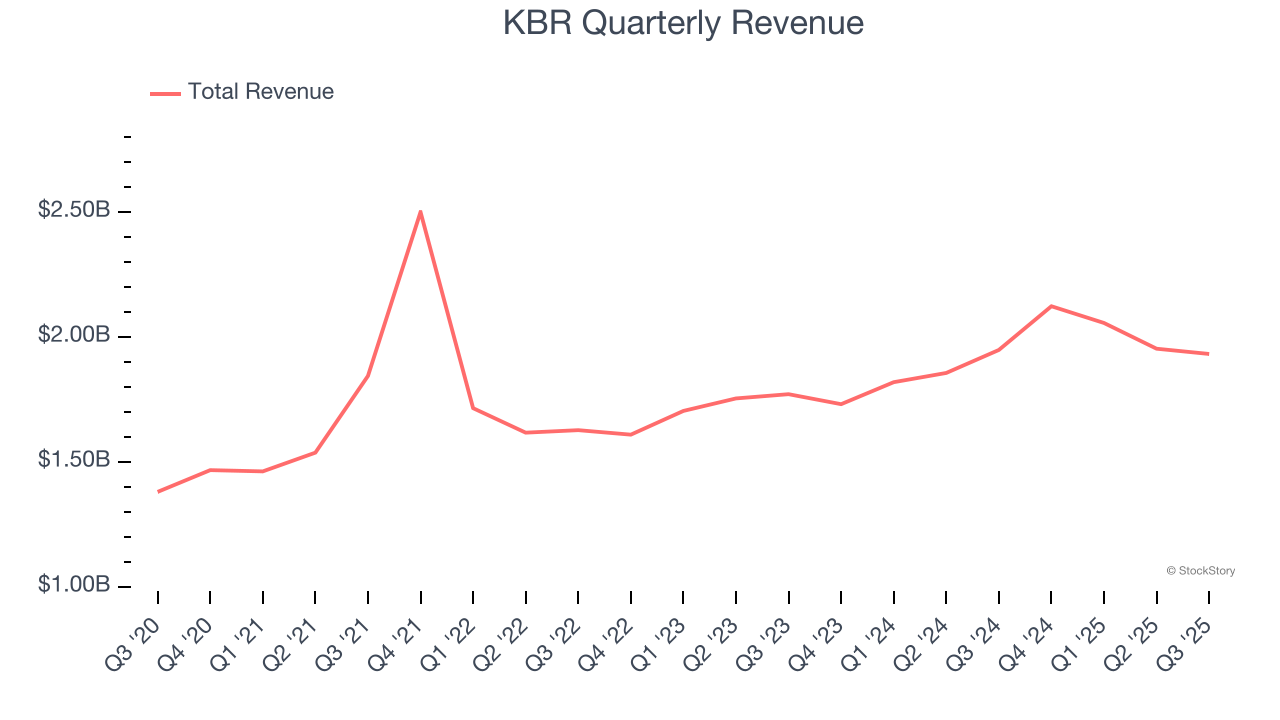
Long-term growth is the most important, but within industrials, a half-decade historical view may miss new industry trends or demand cycles. KBR’s annualized revenue growth of 8.6% over the last two years is above its five-year trend, suggesting some bright spots. 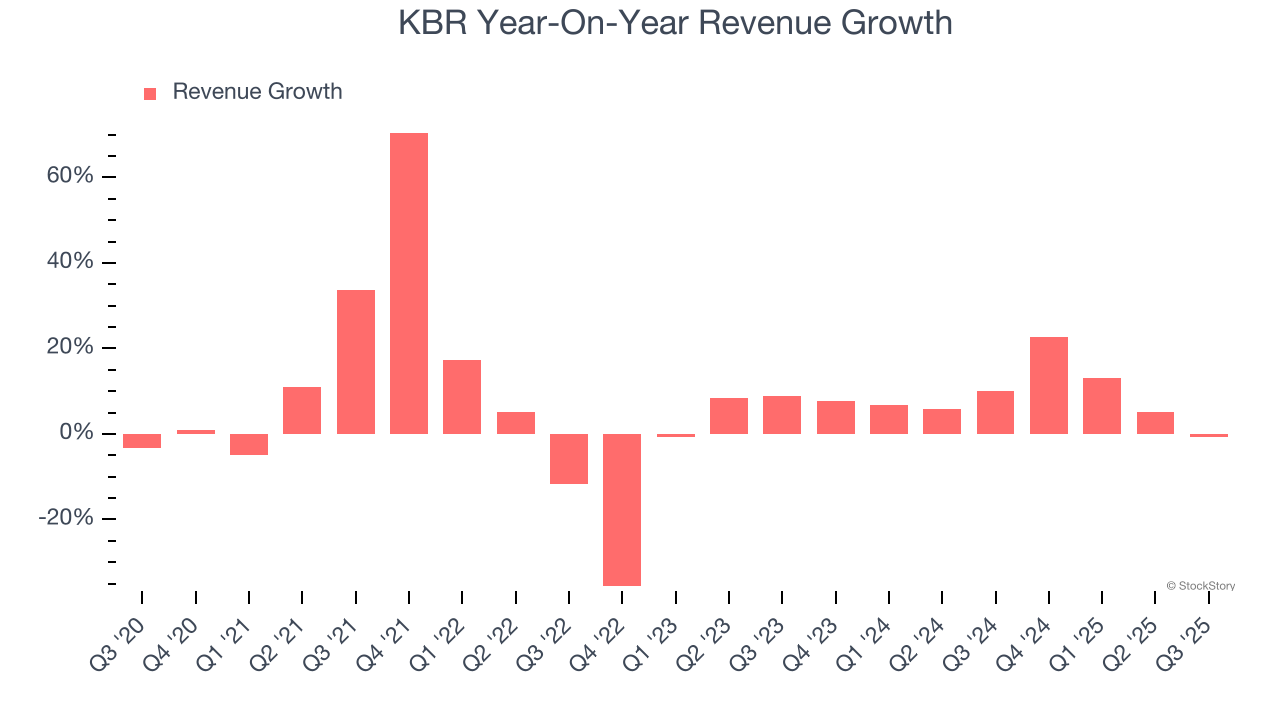
We can dig further into the company’s revenue dynamics by analyzing its backlog, or the value of its outstanding orders that have not yet been executed or delivered. KBR’s backlog reached $17.1 billion in the latest quarter and averaged 1.7% year-on-year growth over the last two years. Because this number is lower than its revenue growth, we can see the company fulfilled orders at a faster rate than it added new orders to the backlog. This implies KBR was operating efficiently but raises questions about the health of its sales pipeline. 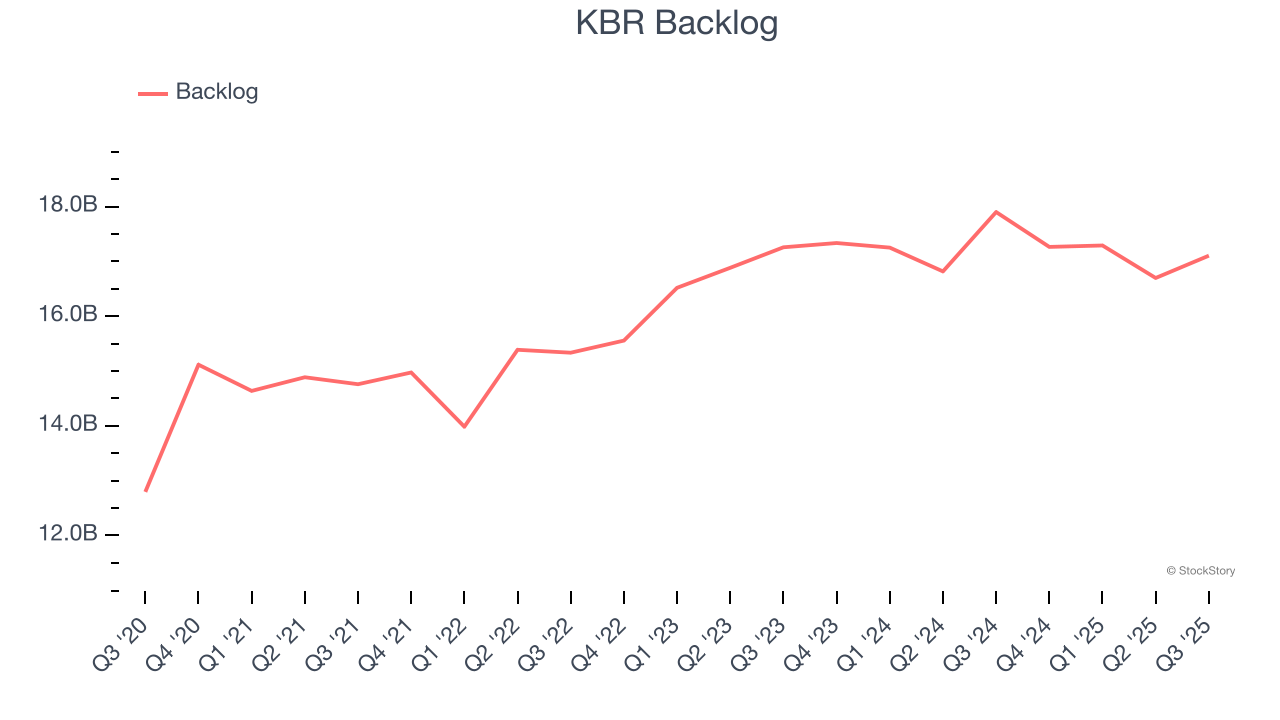
This quarter, KBR missed Wall Street’s estimates and reported a rather uninspiring 0.8% year-on-year revenue decline, generating $1.93 billion of revenue.
Looking ahead, sell-side analysts expect revenue to grow 2.9% over the next 12 months, a deceleration versus the last two years. This projection is underwhelming and implies its products and services will see some demand headwinds. At least the company is tracking well in other measures of financial health.
Software is eating the world and there is virtually no industry left that has been untouched by it. That drives increasing demand for tools helping software developers do their jobs, whether it be monitoring critical cloud infrastructure, integrating audio and video functionality, or ensuring smooth content streaming. Click here to access a free report on our 3 favorite stocks to play this generational megatrend.
Operating Margin
Operating margin is one of the best measures of profitability because it tells us how much money a company takes home after procuring and manufacturing its products, marketing and selling those products, and most importantly, keeping them relevant through research and development.
KBR was profitable over the last five years but held back by its large cost base. Its average operating margin of 6.4% was weak for an industrials business.
On the plus side, KBR’s operating margin rose by 6.6 percentage points over the last five years, as its sales growth gave it operating leverage.
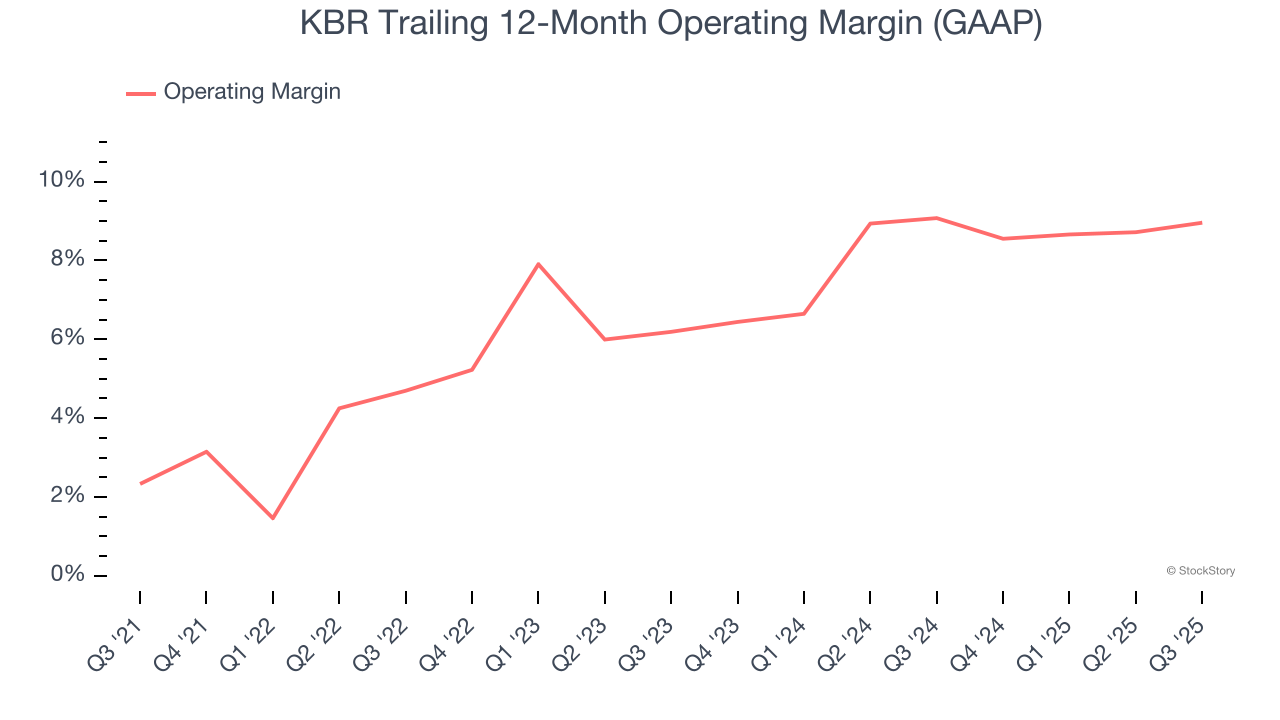
This quarter, KBR generated an operating margin profit margin of 9.9%, up 1 percentage points year on year. This increase was a welcome development and shows it was more efficient.
Earnings Per Share
Revenue trends explain a company’s historical growth, but the long-term change in earnings per share (EPS) points to the profitability of that growth – for example, a company could inflate its sales through excessive spending on advertising and promotions.
KBR’s EPS grew at an astounding 17.9% compounded annual growth rate over the last five years, higher than its 7% annualized revenue growth. This tells us the company became more profitable on a per-share basis as it expanded.
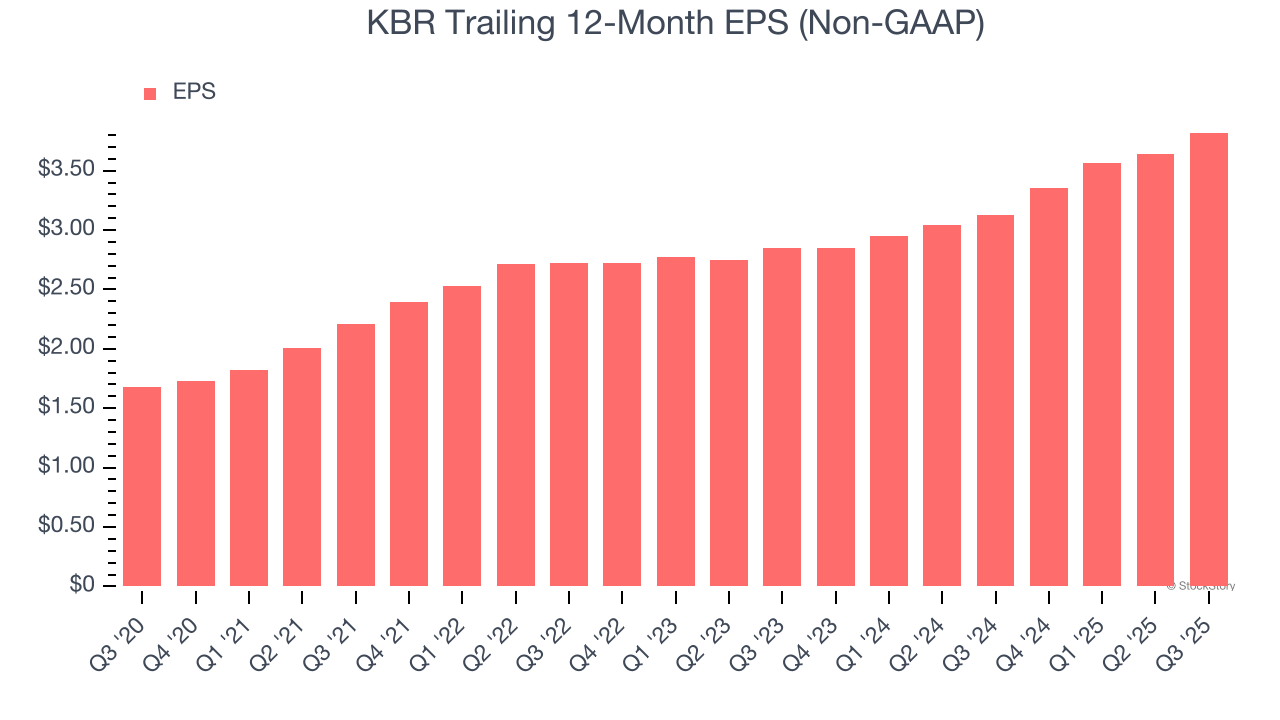
We can take a deeper look into KBR’s earnings to better understand the drivers of its performance. As we mentioned earlier, KBR’s operating margin expanded by 6.6 percentage points over the last five years. On top of that, its share count shrank by 9.9%. These are positive signs for shareholders because improving profitability and share buybacks turbocharge EPS growth relative to revenue growth. 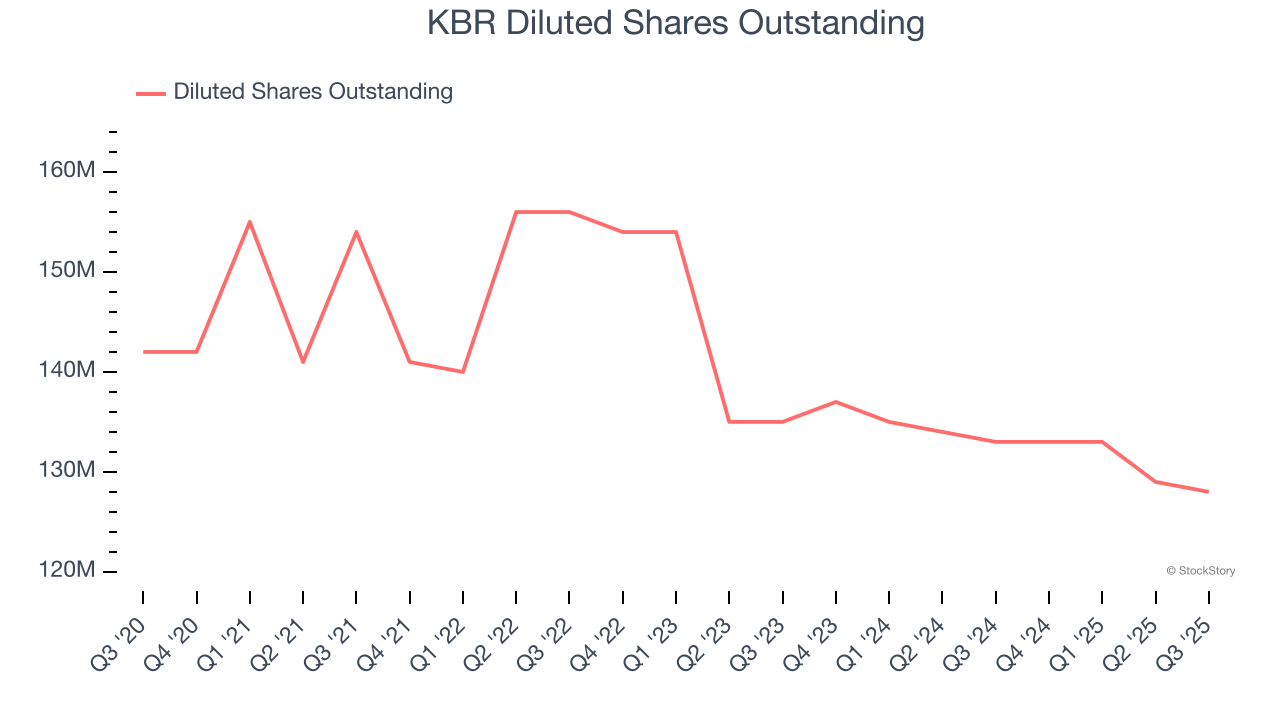
Like with revenue, we analyze EPS over a more recent period because it can provide insight into an emerging theme or development for the business.
For KBR, its two-year annual EPS growth of 15.8% was lower than its five-year trend. We still think its growth was good and hope it can accelerate in the future.
In Q3, KBR reported adjusted EPS of $1.02, up from $0.84 in the same quarter last year. This print beat analysts’ estimates by 6.9%. Over the next 12 months, Wall Street expects KBR’s full-year EPS of $3.82 to grow 4.9%.
Key Takeaways from KBR’s Q3 Results
It was good to see KBR narrowly top analysts’ backlog expectations this quarter. We were also glad its EPS outperformed Wall Street’s estimates. On the other hand, its full-year revenue guidance missed and its revenue fell slightly short of Wall Street’s estimates. Overall, this quarter was mixed. The stock traded up 2.6% to $44.01 immediately after reporting.
So do we think KBR is an attractive buy at the current price? We think that the latest quarter is only one piece of the longer-term business quality puzzle. Quality, when combined with valuation, can help determine if the stock is a buy. We cover that in our actionable full research report which you can read here, it’s free for active Edge members.
